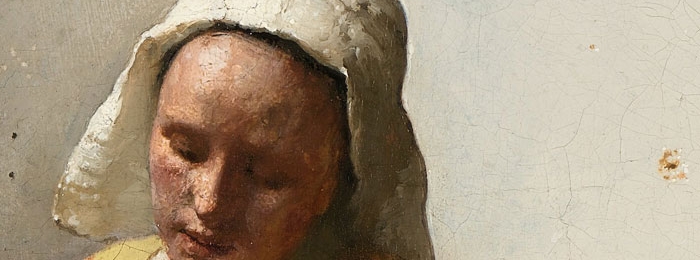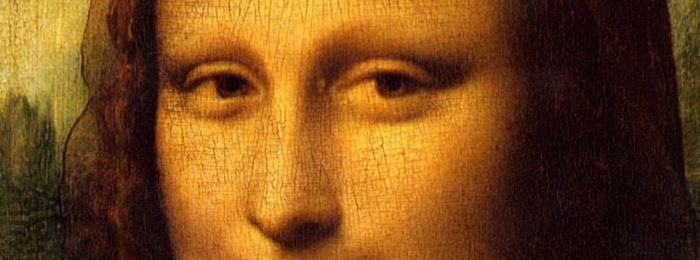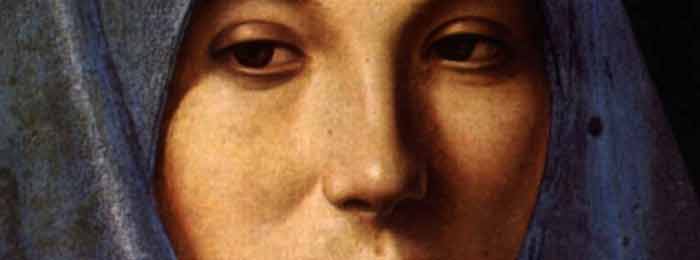On 24 Feb, 2017 With
A question from Farhad, Web Art Academy student
Hi Natalie,
I have been working on a painting for a few months now, as I only spend a few hours on weekends. It is actually my first painting done in multi layer technique. It is almost done except that I need to put some fine details on the fabric the man is wearing. It is a thick woolen fabric like the type used for men’s overcoat. What he is wearing has many folds which I have completed but need to know how to put these details.
There must be a way, technique to do that as I have seen ultra realistic paintings that show these detail, like wear and tear on a pair of jeans. I don’t want to go into that fine detail now but having some details on the folds adds more to the painting. Please let me know if you have any suggestion. …
Read More
On 14 Jul, 2015 With
Vitruvian Man Helps Decode the Mona Lisa The Yin and Yang qualities of the two cojoined forms of the Vitruvian Man and those of the Mona Lisa (both considered to be self portraits of Leonardo Da Vinci)help us to experience our own wholeness. This leads to greater peace and happiness. These Yin and Yang qualities are also found in the Star of David and Christian Cross. Leonardo said it best: “The outstretched arms and legs of a man form a square and a circle: the square symbolizes the solid physical world and the circle the spiritual and eternal. Man bridges the gap between these two worlds.” -Leonardo Da Vinci, “The Magical Proportions of Man” Leonardo Da Vinci’s Vitruvian Man (the…
Read More
On 17 Jun, 2014 With
Oil painting in its first form evolved from an earlier discipline known as , and was an attempt to overcome the severe limitations of that medium, such as a lacklustre finish and too-rapid drying time. Developed originally in Flanders, the method became known as the “Flemish Technique.” This method of painting requires a rigid surface on which to work, one that has been primed pure white, as well as a very precise line drawing. The line drawing was transferred to the white surface by perforating (tracing, in essence) the drawing along its lines. Once this transfer was complete, the resulting lines were enhanced with ink or viscous paint (using either a pen or finely pointed sable brush). The drawing was…
Read More
On 30 May, 2010 With
If you want to learn how to oil paint and not sure how to begin, then the following article will prove to be quite helpful in your pursuit to become a good painter. Before you read on, you will have to try and forget everything you ever learned about oil painting and look at your painting from a new perspective. A recent art class I attended, taught by a master painter, has completely changed the way I approach oil painting and has opened up many new creative doors for me. I hope it will do the same for you.START WITH A CONCEPT Up until just recently, I was a very frustrated oil painter. I have 10 or so…
Read More
On 13 May, 2010 With
Collecting fine art is quickly becoming a more common method of investing and saving money. Putting your money into artwork can result in more of a return than a regular savings account, which is contrary to what most people believe. Many people don’t think of fine art collecting when it comes to managing their money — but nothing could be further from the truth. Here are some common myths about fine art investments and financing. Some of the biggest myths concerning fine art collecting and finances are that it doesn’t appreciate quickly enough to be a good investment. Also, a widely-held assumption and falsity is that art doesn’t do well in a down-turning economy and that prints aren’t valuable. This…
Read More
On 13 May, 2010 With
To accurately convey your feelings about the subject you are painting, you should learn and understand the fundamentals of oil painting like drawing, color theory, value and composition. I hope to give you a better understanding of these fundamentals in this article. This article is meant to be an introduction. You should study these topics further on your own when you have time. DRAWING Learning to draw, as a foundation for oil painting, is one of the most valuable skills a beginner oil painter can have. Many new artists usually frown upon the idea of drawing first. They would rather jump right into painting, as most beginners do. Nothing is more rewarding for a painter, than working with color, but…
Read More
On 12 May, 2010 With
The process of painting with varnishes is popularly known as oil painting. Varnishes are a combination of oil like the linseed oil with the resin such as pine resin. Other than linseed oil, oils like poppy seed oil, walnut oil and safflower oil. Oil paintings provide extremely versatile color combinations. For a thick coat oil paints can be used in impasto, which is a textured application where the marks of the paint brush remain visible. They can even be used for a thin layered image like glazes.Here are some oil painting tips which will make your painting experience more enjoyable and disciplined. • First the selection of a non porous palette is of vital importance; it would be extremely useful…
Read More
On 10 May, 2010 With
Oil Paint is a medium which hardly has any near alternative. But while using these colours we face certain odds. Many artists find it difficult to cope up with the smell of turpentine. Those artists who work at home face the smell as offensive to all other family members who live with the artist. While for the students who work in group at school or art classes have to arrange proper ventilations for eliminating the effects of the heavy odour the turpentine releases in the atmosphere. The invention of paint like Van Gogh H2Oil is like a blessing to the artists who use oil paint. This water mixable colour is now available in market. H2Oil colour can be mixed with…
Read More
On 4 May, 2010 With
Any scene can initially be seen as a composition of a series of forms that are all related to four basic geometric solids: the brick, the sphere, the cylinder, and the cone. In this article we will discuss the interaction of these four forms and how they can be used to create an initial good likeness of just about any scene you wish to draw. Once you have practiced and internalized the four basic geometric forms it is possible to create a very good representation of any scene you wish to draw. It becomes a matter of putting the forms together in an acceptable manner no matter how complex the scene is. In effect, we have reduced the enormous complexity…
Read More
On 2 Apr, 2010 With
Compared to other mediums of painting such as water colours or acrylic or charcoal and so on, oil paintings have always been a favourite medium for artists as well as art lovers. However, the oil medium has its own peculiarities particularly with respect to how it weathers the passage of time. For an oil painting to retain its original shine and form, the artist or the collector needs to maintain it carefully. Particularly if you are an art lover or collector who owns one or several oil paintings, the best way to maintain the paintings is to get some professional help to clean or refurbish your valuable collection. But hiring a professional can be quite expensive and time consuming. If…
Read More




